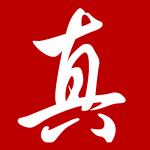Pharma Distribution M&A Opportunity
Having unlocked the next case study of this Theme Vitrine , here is the deal:
Mongolia
“Mongolia’s land area is roughly equivalent to that of the countries of western and central Europe” and it is surrounded by other giants in the form of China, Russia and Kazakhstan. Yet it has only 3.3 million people and 4x the sheep heads.
Its main economic activity and driver is mining with a share of almost a quarter of the GDP. For example: “Oyu Tolgoi is one of the largest known copper and gold deposits in the world”It is largely an export-import-dependent nation with the bulk of its exports sold to China in the form of coal and copper, both having negative direct land & indirect health effects from excavation.By contrast, health and education have been focal to every government in Mongolia (all democratically elected since the 90s!), with the healthcare expenditure rising to over $500 per capita.Despite state-owned health facilities being a regular occurrence in Mongolia, the private sector has grown in importance. So for example, even the former state incumbent distributor MEIC (Mongol Em Impex Concern established in 1923) was privatized to Bishrelt Holding in 2006.
Mongolian pharma market is formed by:
40 local producers
Local production mainly consists of small producers producing old generics, traditional medicines & vitamins, with Monos and some foreign JVs being exceptions rather than a rule
120 wholesalers
Top 10 wholesale pharma distributors / importers take over 80% of the market: MEIC, Monos, Asiapharma, Ento, Europharma, Munkhiin Tun, Dakalpharma, Ombol, Monpha Trade, Tsahiur Tomor
1,300 retailers
250 outlets within state-owned hospitals, 250 pharmacies part of a chain/retail network such as Monos, and the rest independent outlets licensed by individual pharmacists
60 source-countries of imports
Russia, Germany, Slovenia, Hungary, India, Bulgaria, France, Austria, S.Korea, China… (most of the raw material comes from China and S.Korea)
An estimated 15-20% of pharma products are sold illegally in the country, a similar estimate to that of Kyrgyzstan pharma market.

Photo:BH
Mongolia’s pharmaceuticals sector has doubled over the last decade, from about $60mil to about $100mil, depending on the definition. This translates to +/-$30 per capita, still leaving a significant upside to catch up to comparable peers. So for example this in line where neighbouring Kazakhstan @ $32/cap was 12 years ago.
All in line with pharma consumption being very much related to increasing living standards, whereby health consciousness translates to a stronger demand for preventive medicine, food supplements and vitamins.
Currently, Mongolian drug consumption is still very much a developing world type, with the top five categories being antibiotics, digestives, cardiovascular, neurotropic & respiratory medicines.
There are seven government bodies or agencies involved in the pharma market regulation, which can be viewed as relatively lenient compared to some peer countries. The following functions and/or periodic (re)licensing / review / approval: licensing of manufacturing, licensing of importation, licensing of wholesale, licensing of retail, product assessment and registration, GMP Inspection, inspection of distribution channels, import control, quality control of products, control of medicines promotion& advertising, price control for the essential list, generic substitution, control of prescribing, technical elements (standards, norms, guidelines, procedures).
Monos is a family business started by brother and sister Luvsan in 1990, as a small pharma & cosmetics workshop producing skin treatment creams, powders and solutions for respiratory diseases using local herbal ingredients.
Being a pharmacologist by training, educated in the former USSR, the brother was an industry insider having worked for the Pharmaceuticals Institute and MEIC, a former state import & distribution monopoly.
It has diversified into other sectors over the last decade but with pharmaceuticals still at its heart. With 1,600 employees and 30 businesses, the group as a whole is a significant contributor to employment and state taxes.

Photo:BB
Monos operates a nationwide wholesale & distribution network, and a pharmacy chain (mainly in Ulaanbaatar and Central Mongolia). It also has a number of drug-, cosmetic- & health-foods-making facilities, which manufacture approx.100 types of medicines including 30 own brands. The retail chain has 90 pharmacy stores, a roughly equivalent amount to the incumbent competitor.
Mr. Luvsan / Monos won a number of state awards including for scientific research on kidneys and immune booster development. Given that the country relies on 80% of its drug consumption from imports, a rare event is that its own brand Nefromon is exported to Russia since 2014. Today the business has a pharma academy and medical research centres for bolstering innovation and future growth.
Production technology, WHO GMP-compliant and financed by the EBRD, allows for manufacturing of plain tablets, coated tablets, galen, capsules, powder, pills, cream, talcum powder, liquid, extract & syrup.
Monos’ pharmaceutical market share is probably at about a third of what is estimated to be just about a $100mil total pharma market, depending on the definition. Whereby being a straight-out leader in local production, which in total accounts for less than 20% of pharmaceutical demand in the country; a joint co-leader in wholesale with the sate MEIC; and a top player in the fragmented retail space.
Probably operating at a consolidated pharma EBITDA of 15-20%, where profitability from better to worse goes from own production to drug wholesale to retail outlets.

Given Mongolia’s landlocked status & relative isolation, its harsh winters with related seasonality, and high import dependence coupled with relative unfavourable supplier terms given the size of the production & overall significance in world markets- pharma business should have a longer asset conversion cycle than some comparable peer countries.
Managing working capital where a lot of cash is tied up, and in particular inventory turnover, is of great importance for its distribution units. At perceived volumes, modernised facilities and installed ERP, inventory days-on-hand should probably aim at (+/-): 100 days for the main warehouse, with logistics sub-points & city outlets at around 25 days, while areas outside Ulaanbaatar should be allowed up to 75 days.
The company should be well bankable (strong fixed asset base, reasonable net debt, predictable & growing cash flow, etc.), if it did not get too playful with the non-core businesses, and should be easily able to organically operate solely with the local financial institutions. It also does not look like that Monos has potential problems with succession, as it remains largely an extended family affair. On the other hand, it could have going public potential.!?
Theme Contribution

Madina Umarova
Experienced consultant with a demonstrated history of working in the industry. Skilled in commercial and nonprofit activity. Strong in business development, HR, marketing and administration.
Madina also is:
- Vice president, head of economic group (CIS), Coordinating Council of Russian compatriots in Croatia
- Founder of the Russian culture club in Croatia
- Teacher of Russian language and literature (& business comm)
And was:
- KPMG senior office administrator
- Professor at Law university
- Club administrator
- Cello instructor
Theme Related Tracker
- Major breakthrough for 'smart cell' designon January 3, 2025
Rice University bioengineers have developed a new construction kit for building custom sense-and-respond circuits in human cells. The research, published in the journal Science, represents a major breakthrough in the field of synthetic biology that could revolutionize therapies for complex conditions like autoimmune disease and cancer.
- Cancer-preventing topical immunotherapy trains the immune system to fight precancerson January 2, 2025
A new study by investigators from Mass General Brigham uncovers how a novel immunotherapy prevents squamous cell carcinoma, with benefits lasting five years after treatment. This therapy is the first to activate specific components of the adaptive immune system, particularly CD4+ T helper cells, which are not known to be involved in traditional cancer treatments. This work highlights the potential for similar immunotherapies to prevent other cancers throughout the body. Results are published in the Journal of Clinical Investigation.
- Propranolol reduces tremors in Parkinson's diseaseon January 1, 2025
The standard medication levodopa does not always work against tremors in Parkinson's disease, especially in stressful situations. Propranolol, however, does work during stress, providing insight into the role of the stress system in tremors. MRI scans reveal that propranolol directly inhibits activity in the brain circuit that controls tremors. Doctors may consider this medication when levodopa is ineffective.
- New drug to prevent migraine may start working right awayon December 31, 2024
A drug recently approved to prevent migraine may start working right away, according to a study published in the December 23, 2024, online issue of Neurology®, the medical journal of the American Academy of Neurology. The study looked at the drug atogepant, which is a calcitonin gene-related peptide (CGRP) receptor antagonist taken by mouth.
- Does coffee prevent head and neck cancer?on December 30, 2024
In a new analysis of data from more than a dozen studies, coffee and tea consumption was linked with lower risks of developing head and neck cancers, including cancers of the mouth and throat. Cancers of the head and neck are the seventh most common forms of cancer worldwide, and rates are rising in low- and middle-income countries. Many studies have assessed whether drinking coffee or tea is associated with head and neck cancer, with inconsistent results.
- How fungi make a key medicinal moleculeon December 20, 2024
For roughly a century, ever since Alexander Fleming's accidental discovery of penicillin in 1928, fungi have proven to be a goldmine for medicines. They've provided treatments for a wide range of diseases, from infections and high cholesterol to organ rejection and even cancer. However, the process by which fungi synthesize some of their most potent compounds remains opaque.
- First successful clinical trial of VU319 brings Alzheimer's treatment one step closeron December 19, 2024
Researchers at the Warren Center for Neuroscience Drug Discovery, a clinical stage biotech within the Vanderbilt University School of Medicine Basic Sciences, have detailed the successful drug discovery of a phase I single ascending dose clinical trial of VU319, a drug for memory loss in people with Alzheimer's disease and schizophrenia. "This milestone highlights Vanderbilt’s ability to drive discovery from research to clinical impact," said Provost and Vice Chancellor for Academic Affairs Cybele Raver.
- What is metformin’s secret sauce?on December 18, 2024
Millions of people take metformin, a Type 2 diabetes medication that lowers blood sugar. The "wonder drug" has also been shown to slow cancer growth, improve COVID outcomes and reduce inflammation. But until now, scientists have been unable to determine how, exactly, the drug works. A new Northwestern Medicine study has provided direct evidence in mice that the drug reversibly cuts the cell’s energy supply by interfering with mitochondria,
- Nano drug delivery system heralds safer era for drug developmenton December 17, 2024
A team of University of Melbourne researchers from the Caruso Nanoengineering Group has created an innovative drug delivery system with outstanding potential to improve drug development. The team has pioneered a drug delivery system that is a coordination network composed of only metal ions and biomolecules, known as metal-biomolecule network (MBN).
- New drug shows promise against Duchenne muscular dystrophyon December 16, 2024
A novel drug holds promise for treating Duchenne muscular dystrophy (DMD), a rare genetic disorder that causes severe muscle degeneration. McGill University researchers have discovered that an experimental compound called K884 can boost the natural repair abilities of muscle stem cells. Current treatments can slow muscle damage, but don’t address the root problem.




















